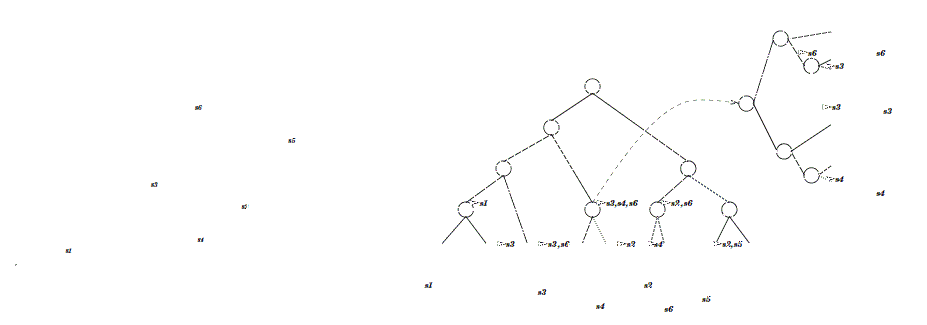|
CGAL 4.10.1 - dD Range and Segment Trees
|
|
CGAL 4.10.1 - dD Range and Segment Trees
|
#include <CGAL/Tree_base.h>
Tree_base.
Tree_anchor is also derived from Tree_base.
Therefore, it provides the same methods as Range_tree_d and Segment_tree_d, but does nothing; it can be used as a recursion anchor for those classes. Therefore, instantiate Sublayer_type of Range_tree_d (Segment_tree_d respectively) with Tree_anchor and the container classes for the data items (Data and Window).
Example
The following figures show a number of rectangles and a 2-dimensional segment tree built on them.

Types | |
| typedef unspecified_type | Data |
container Data. | |
| typedef unspecified_type | Window |
container Window. | |
Creation | |
| Tree_anchor< Data, Window > | a () |
Operations | |
| template<class OutputIterator > | |
| OutputIterator | window_query (Window win, OutputIterator result) |
| template<class OutputIterator > | |
| OutputIterator | enclosing_query (Window win, OutputIterator result) |
| bool | is_valid () |
| returns true; | |
| bool | is_inside (Window win, Data object) |
| returns true. | |
| bool | is_anchor () |
| returns true. | |